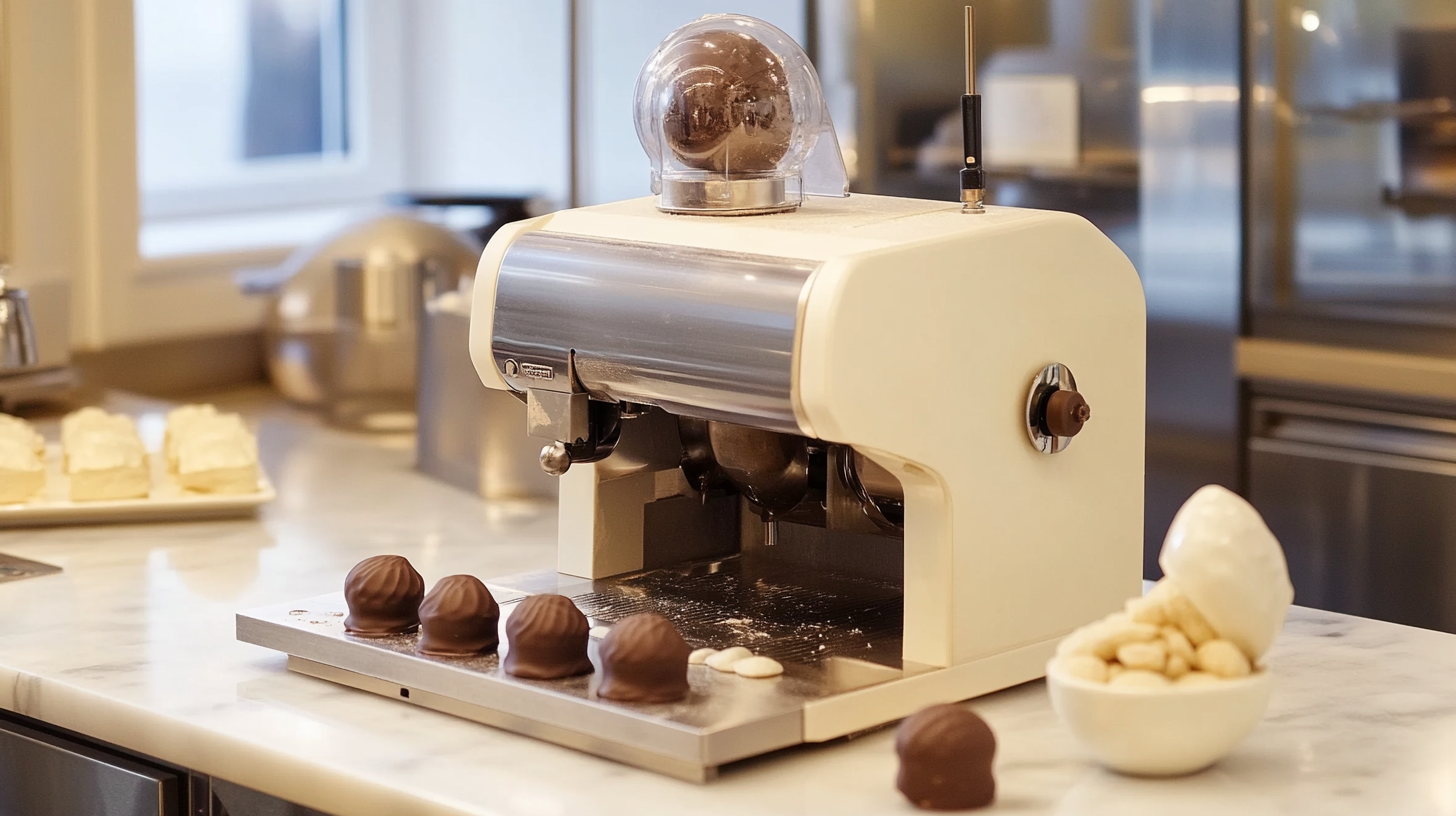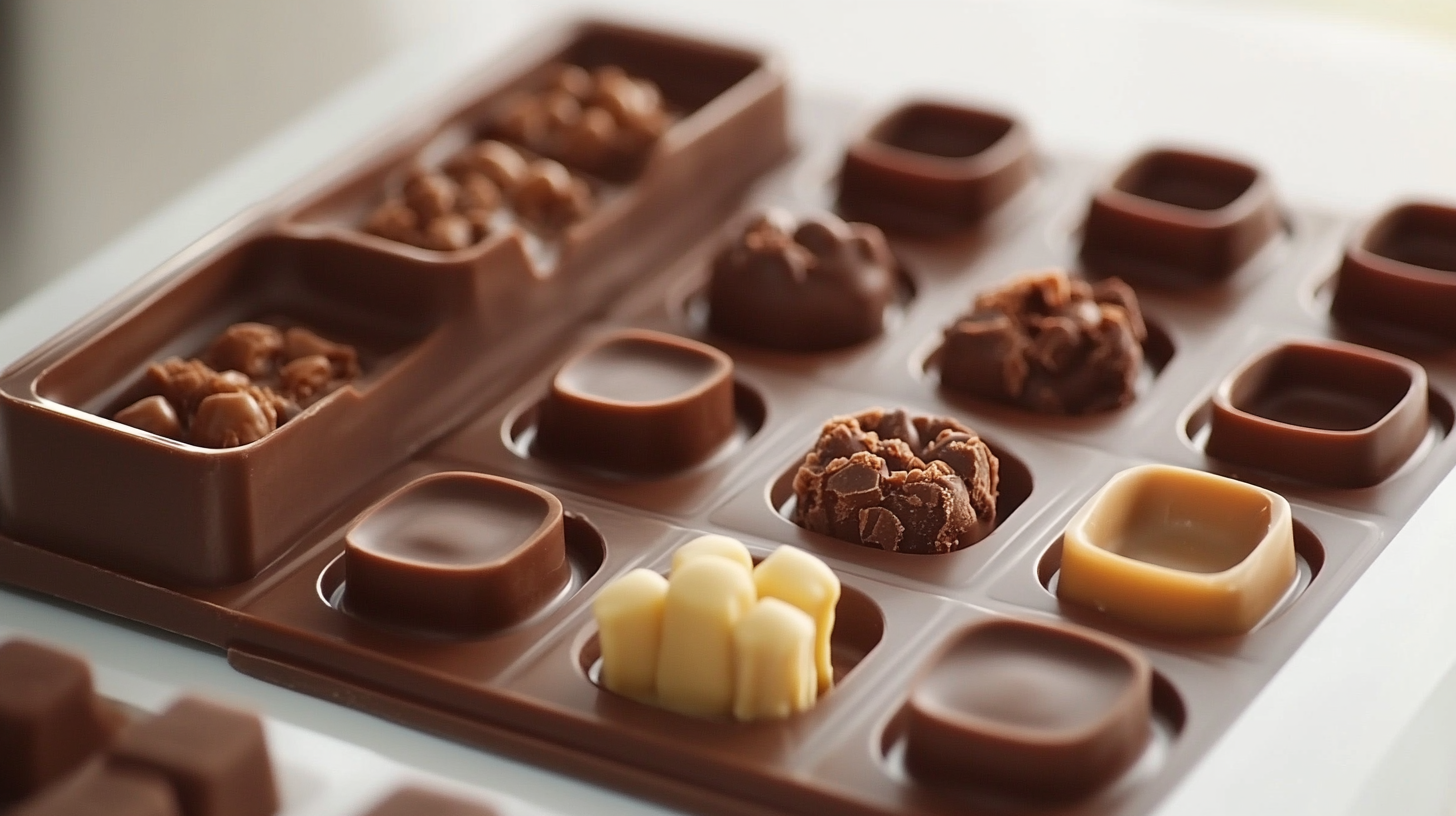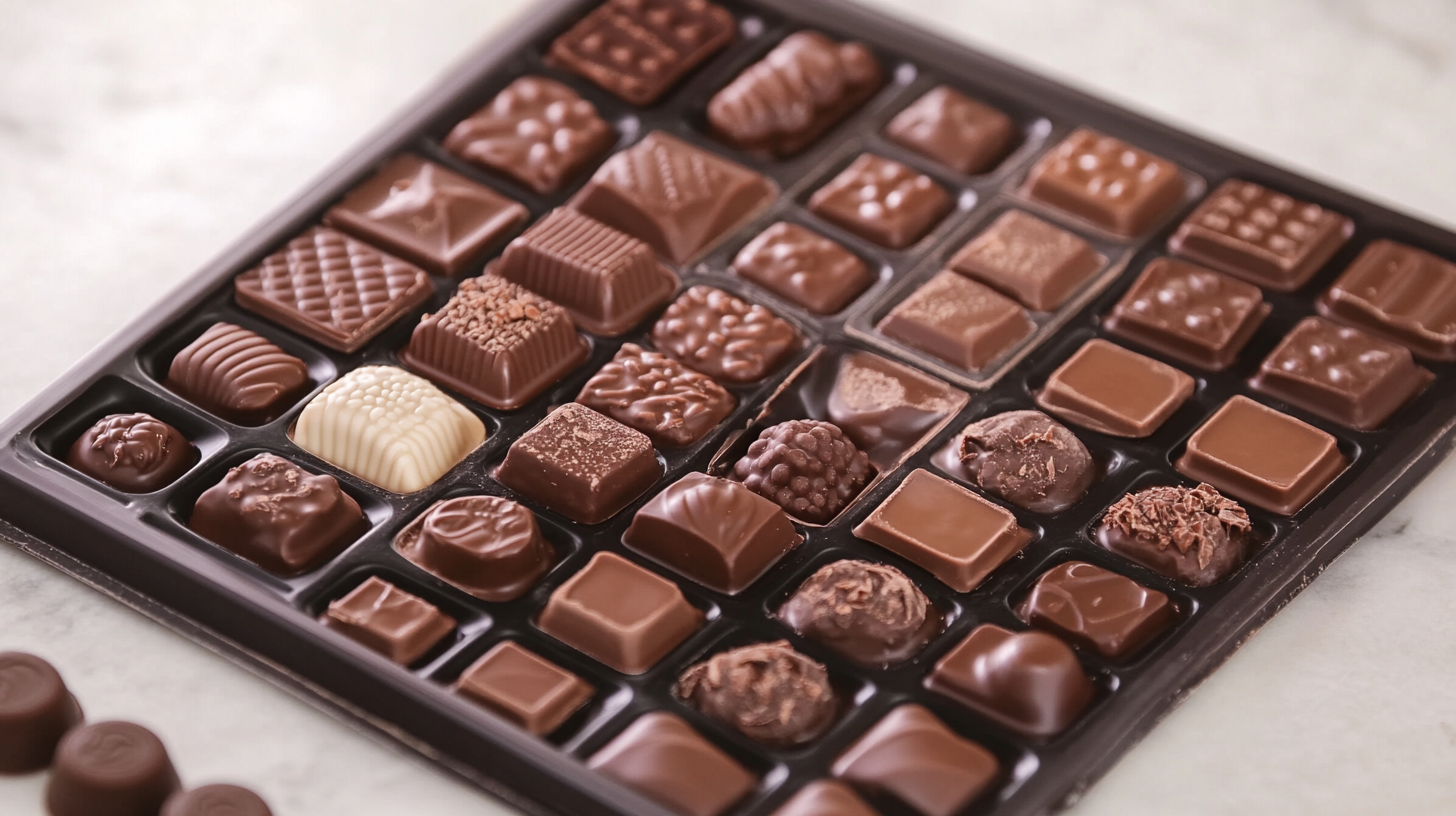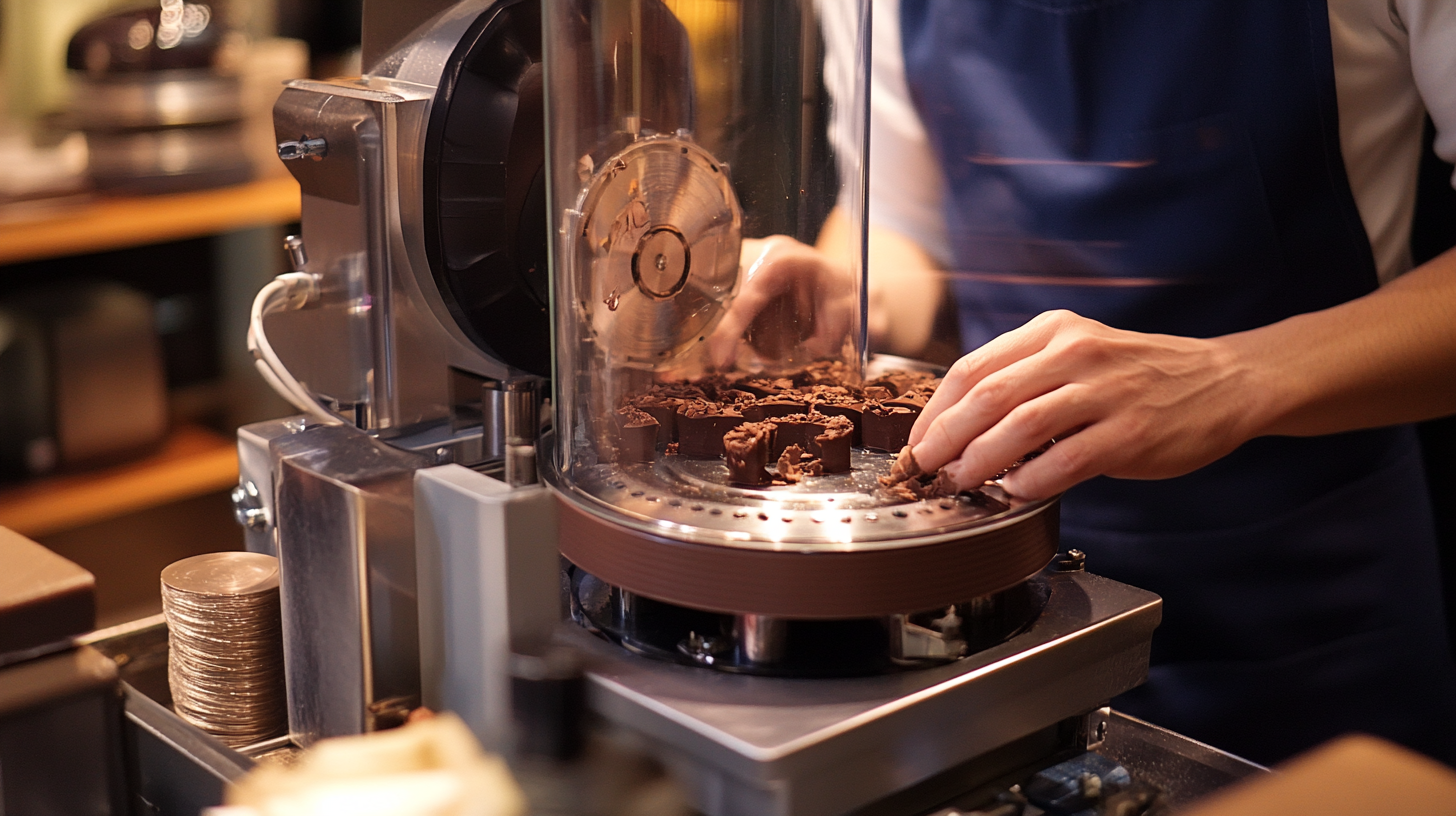Ultimate Manual for Mastering Your Chocolate Molding Machine
In the world of confectionery, the chocolate molding machine stands as an essential tool for chocolatiers aiming to create exquisite and perfectly shaped chocolate delights. With its ability to produce intricate designs and maintain consistency in quality, mastering this machine can significantly elevate your chocolate-making skills. Whether you’re a seasoned professional or an enthusiastic novice, understanding the mechanics and techniques involved in using a chocolate molding machine is key to achieving delectable results.
This ultimate manual is designed to guide you through every aspect of chocolate molding, from selecting the right equipment to technique refinement. We will explore the essential steps for working with a chocolate molding machine, provide troubleshooting tips, and share expert insights that will help you harness the full potential of this incredible tool. Get ready to transform your chocolate creations as we delve into the art and science of mastering your chocolate molding machine!

Understanding the Basics: What is a Chocolate Molding Machine?
Chocolate molding machines are fascinating tools that elevate the art of chocolate making from simple confections to stunning creations. At its core, a chocolate molding machine automates the process of pouring tempered chocolate into molds, ensuring consistency in shape and quality. This device is essential for chocolatiers looking to produce chocolates in bulk while maintaining the delicate allure of handcrafted pieces. Understanding the basics of a chocolate molding machine involves familiarizing oneself with its components and operation. Typically, these machines consist of several parts including a melting tank, a conveyor belt for molds, and a cooling tunnel. The melting tank holds the tempered chocolate at the perfect temperature, facilitating a smooth flow into molds. After the molds are filled, they are conveyed through a cooling tunnel where the chocolate hardens, resulting in beautifully formed chocolates ready for packaging. Investing in a chocolate molding machine can revolutionize any chocolate-making business. Not only do they save time and labor, but they also enhance creativity by allowing chocolatiers to experiment with different mold designs and flavors. As artisans continue to explore innovative approaches in the culinary world, mastering the use of these machines will help ensure their chocolates stand out in a competitive market.

Essential Features to Look for in a Chocolate Molding Machine
When investing in a chocolate molding machine, understanding the essential features is paramount for both efficiency and product quality. According to a recent report from the International Confectionery Association, the chocolate processing machinery market is projected to grow at a CAGR of 5.4% between 2021 and 2026, driven by increasing demand for artisanal chocolates. This growth underscores the need for manufacturers to source machines that not only meet production capacity but also adhere to stringent quality standards.
One of the key features to consider is the temperature control system, which influences the viscosity of the chocolate during molding. A precise temperature regulation can ensure that your chocolate maintains the best texture and sheen, critical for appealing end products. In fact, studies indicate that chocolate molded at an optimal temperature range of 30-32°C results in a significant enhancement in gloss and reduces the chances of blooming, which is essential for high-end chocolate products.
Additionally, mold adaptability is another important aspect. Machines that offer interchangeable molds cater to a variety of product shapes and sizes, providing manufacturers the flexibility to innovate. A report by TechNavio highlights that companies offering customizable solutions have a competitive edge in meeting niche market demands. These features not only streamline production but also help in reducing downtime associated with mold changes, ultimately leading to increased productivity in chocolate manufacturing.

Step-by-Step Guide: Setting Up Your Chocolate Molding Machine
Setting up your chocolate molding machine is a crucial step in achieving professional-quality chocolates. First, ensure that you have a clean and organized workspace, as cleanliness directly affects the quality of your chocolate. Begin by unpacking the machine and reading the manufacturer’s manual thoroughly to familiarize yourself with its components. Pay attention to the safety instructions and maintenance guidelines, as proper handling will extend the life of your equipment.
Next, place your chocolate molding machine on a stable surface, ideally near a power outlet and within reach of your chocolate melting equipment. Ensure that the machine is level and secure to prevent any instability during operation. Once your setup is complete, it’s time to configure the machine settings based on the type of chocolate you’ll be using. Adjust the temperature settings to match the specific requirements of milk, dark, or white chocolate, ensuring optimal melting and molding conditions.
After calibrating the machine, run a test cycle using dummy molds and leftover chocolate. This trial will help you identify any potential issues and ensure that the machine is functioning correctly. Observe the chocolate flow into the molds and check for consistency in the final product. With these steps completed, you’re well on your way to mastering your chocolate molding machine, ready to create exquisite chocolates for any occasion.

Tips and Tricks for Achieving Perfectly Molded Chocolates
Molding chocolates can be both an art and a science, requiring precision and patience for the best results. One of the top tips for achieving perfectly molded chocolates is ensuring your chocolate is tempered correctly. Tempering not only gives your chocolates a beautiful shine but also helps them snap cleanly when bitten into. To temper chocolate, melt it slowly to about 115°F, then cool it down while stirring until it reaches around 88°F for dark chocolate or 86°F for milk and white chocolates. This process aligns the cocoa butter crystals, resulting in a smooth and professional finish.
Another important trick is to choose the right chocolate for your projects. Not all chocolates are created equal; some brands are better for molding than others. Look for chocolates that have a higher cocoa butter content, as they tend to flow better into molds and set up nicely without bloating or dulling. When filling molds, be sure to tap them gently on the counter to release any trapped air bubbles that might ruin the aesthetic of your chocolates. Allow the filled molds to cool in a stable environment to achieve consistent results.
Lastly, don’t overlook the final touches. Once your chocolates are molded and popped out, consider adding a unique flair with toppings or a drizzle of contrasting chocolate. These finishing touches can elevate the presentation, making your chocolates not only a delight to the palate but also a feast for the eyes. By following these tips and tricks, anyone can master the art of chocolate molding and create beautiful, handmade chocolates perfect for gifting.
Common Mistakes to Avoid When Using a Chocolate Molding Machine
When diving into the world of chocolate molding, it's easy to get caught up in the excitement and overlook some fundamental aspects that can lead to disappointing results. One of the most common mistakes people make is not adequately tempering the chocolate. Proper tempering is crucial for achieving a glossy finish and a satisfying snap. Failing to maintain the right temperature throughout the melting and cooling process can result in dull-looking, cloudy chocolate that lacks the desired texture. Always invest the time to learn and practice proper tempering techniques before using your chocolate molding machine.
Another frequent pitfall is neglecting to clean the machine properly between uses. Residual chocolate can not only affect the flavor of your next batch but also disrupt the molding process. Make it a habit to disassemble parts that come in contact with chocolate and clean them thoroughly after each session. Additionally, ensure that the machine is completely dry before pouring in fresh chocolate to prevent unwanted clumping or uneven flow during the molding process. By maintaining hygiene and attention to detail, you set the stage for consistent high-quality results.
Lastly, many novice chocolatiers underestimate the importance of proper filling techniques. Overfilling molds can lead to messy results while underfilling can cause inconsistent shapes. Using a pipette or precise pouring method can help create uniform chocolates and minimize wastage. Take your time to practice these techniques, and don’t rush through the filling process. Familiarizing yourself with your chocolate molding machine and avoiding these common mistakes will elevate your chocolate-making game to new heights.
